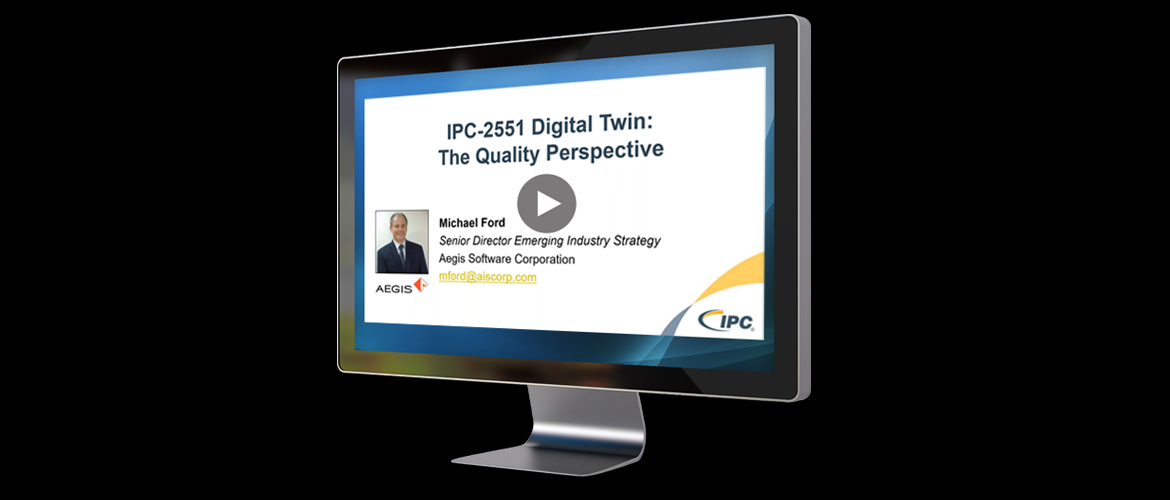Any piece of manufacturing software has within it, an element of a digital twin. This has always been the case, as computer applications by definition, work with data that represents physical things or events, using the data to perform tasks which after computation, influence the physical world. Of course, there are those who are using the term, “digital twin” to highlight technologies within their products as they try to differentiate their solutions. Ironically, most represent their digital twins through the use of catchy 3D graphics, bringing the digital world back to analog. Applications of AI does not need such visual images, they are only really there for humans. It is what happens inside that is important.
The limitation of any digital twin solution in the market therefore, is exactly the same as for a computerized solution. The better the data, the better the capability and the result. With Aegis as one of the founder contributors of the revolutionary IPC Connected Factory Exchange (CFX) standard, and as machines become certified with the IPC, we increasingly see a massive burden lifted of cost and complexity of data acquisition and exchange, bringing wider opportunity for FactoryLogix to create and drive a modern ontology-based best practice of contextualized information.
Data exchange however, does not stop at the factory-floor level. IIoT data exchange between systems that work within different areas of the holistic manufacturing business process also need to be connected, with a defined ontology of information. As with IPC CFX, the IPC Digital Twin is targeted at providing the required language for interoperability of data between manufacturing and design, as well as out into the market and back. There are so many use-cases of information exchange between these domains, which today is resolved with simple, effective but ultimately limiting interfaces, in the same way as pre-CFX interfaces continue to work on the shop-floor. To get the real value to and from manufacturing software, including any and all digital twin solutions out there, the overall framework and architecture need to be defined. This is the principle behind the IPC Digital Twin. The alternative is to be sucked in to proprietary solutions that attempt to cross boundaries, but are limited in flexibility, not allowing customers to select their own idea of what the best tool for the job may be.
Due to the very nature and expanse of the holistic view, there will always be a need for different solutions from different experts in each area. The rules and mechanism for road transportation are standard, yet we each can own very different specifications of automobiles.
Click here to access a video that introduces the IPC Digital Twin, using as an example, the application to quality, that enables a better understanding of what the IPC Digital Twin is all about.
As with CFX, Aegis is a key contributor to the creation of this new global standard.
Sign up for our blog
Stay up-to-date on the latest in manufacturing trends, insights and best practices.





